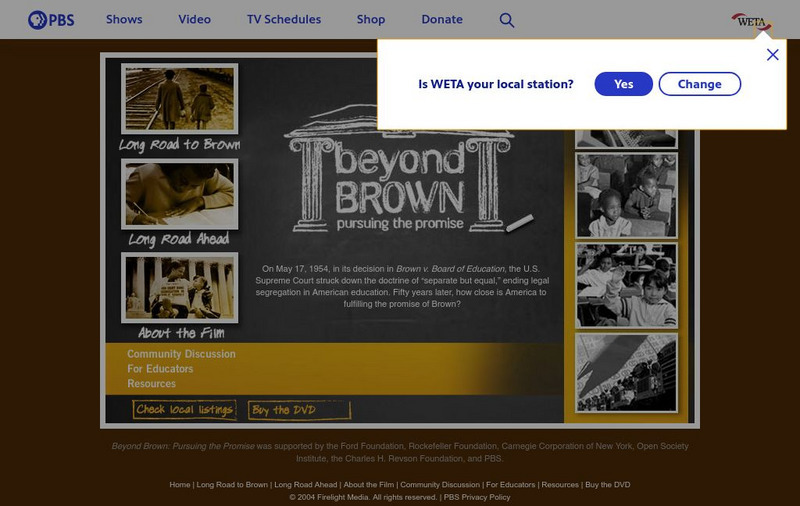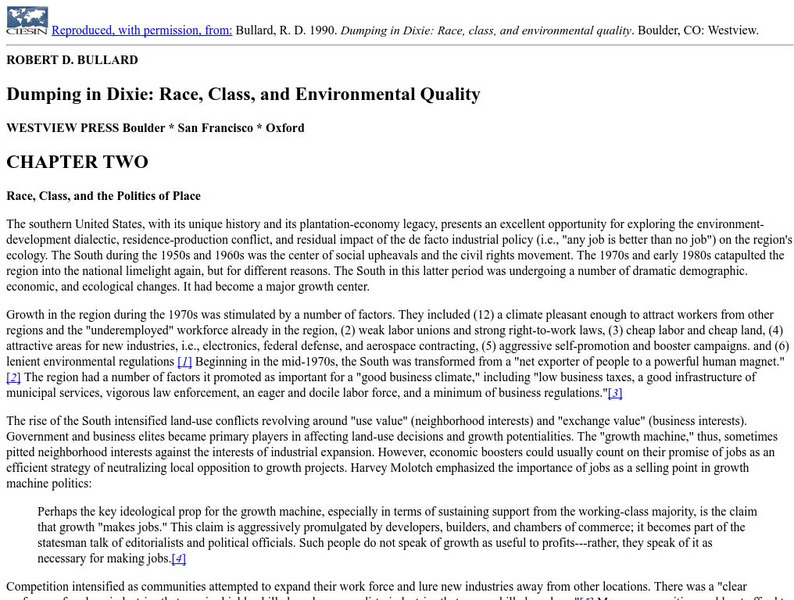Curated OER
Push and Pull Factors: Tug O' War
Students define the concepts and create a list of push and pull factors after reading a narrative about migration. Each distinct factor be written up on index cards labeled "Push" or "Pull." students engage in a tug of war to simulate...
Curated OER
News Watch
Students examine newspaper articles that deal with human rights issues, prejudice, ethnic wars, antisemitism, racism, and inequality.
Curated OER
Campaigns For Economic Freedom
Young scholars examine how racial discrimination affected the economic outlook for African Americans in the 20th century. They view primary source materials to examine two demonstrations, and analyze economic strategies of the mid- to-...
Curated OER
Anne Frank: Tiles - Discrimination Themes in Art Production
Young scholars brainstorm a list of past or present acts of discrimination of which they are aware. They think about the feelings of the victims of these acts. They attempt to make a graphic visual of how those feelings might look.
Curated OER
Prejudice Discussion
Students discuss ethical dilemmas in a cooperative setting, and compare today's social problems with those present during the rise of the Nazi party.
Curated OER
Maniac Magee
Seventh graders read Mania Magee as a shared literature experience. This lesson plan presents some ideas to use after certain chapters in the book as a way of supplementing student learning and involvement in the story.
Hartford Web Publishing
World History Archives: Sncc Fought for Change From the Bottom Up
A highly informative narrative on the development and philosophy of the Student Nonviolent Coordinating Committee, with comparisons to Dr. King's SCLC and the Black Panther Party. Good resource.
Library of Congress
Loc: Teachers: Segregation: From Jim Crow to Linda Brown
Lesson from the Library of Congress on "the era of legal segregation in America, from Plessy v. Ferguson (1897) to Brown v. The Board of Education, Topeka, Kansas (1954)."
National Endowment for the Humanities
Neh: Edsit Ement: Civil Rights Movement
This lesson on the Civil Rights movement is organized into three sections: "Identifying the Need for Change," "Ordinary People in the Civil Rights Movement," and "Historic Places in the Civil Rights Movement."
Georgia Department of Education
Ga Virtual Learning: Social Inequality: Sociology
Comprehensive learning module on social inequality. Course examines inequality of race, gender, ethnicity and age. Students navigate through informational text, activities, assignments, review and assessment. Links to further reading and...
Digital History
Digital History: Chapter 7: Affirmative Action and the Case of Alan Bakke [Pdf]
Article presents an overview of the history behind the birth of 'affirmative action'. Includes a discussion of the Supreme Court case of Alan Bakke v. the University of California and student exercises that test comprehension of the topic.
University of Illinois
University of Illinois: Chinese Experience in 19th Century America
Extensive multi-lesson teaching unit focuses on the Chinese immigrant experience in the late 19th century.
Trinity University
Trinity University: Inequality and Education
Trinity University offers an overview of the problems of inequality in the education system in the United States. Has links to charts and articles about income and education.
University of Illinois
University of Illinois: The Chinese Experience: Chinese Exclusion
This lesson plan is from a larger unit examining the Chinese immigrant experience in America in the 19th century. Students will examine actions that were taken to discriminate against the Chinese and exclude them from American society.
PBS
Pbs Learning Media: Taking a Stand
This teacher lesson has the students explore discrimination and segregation and its impact on the Civil Rights movement. It begins by having the children look at rules and laws in society and then examine historical examples of...
PBS
Pbs: American Experience: The Murder of Emmett Till
The murder of Emmett Till was a major catalyzing event in the Civil Rights Movement. Here you will find extensive information on the murder, trial, and the ramifications of both.
PBS
Pbs Bloodlines: Technology Hits Home
This site is a must see for any lesson or unit on biotechnology! It is a companion to the PBS video "Bloodlines: Technology Hits Home," although it can certainly be used without the video. It's a fantastic site that will challenge...
PBS
Pbs Bloodlines: Making Precedent
Excellent site where students are challenged to read several case studies and make choices about what they would do in the situation. After they choose they are presented with some of the consequences that their decision may produce in...
PBS
Pbs: Beyond Brown: Pursuing the Promise
PBS always provides an excellent website! This time they turn their attention to the famous Brown case. Site presents educational photos and narrative about the long road to Brown and the long road ahead.
PBS
Pbs: Tolerance in Times of Trial
This lesson compares the treatment of Japanese-Americans and German-Americans during World War II and the treatment of Arab-Americans after September 11th.
Other
Sweatt v. Painter Archive
This site has just about everything one might want to know in an investigation of the important Supreme Court decision in Sweatt vs. Painter.
Other
Bringing History Home: Segregation History
This 3rd grade unit introduces children to the history of segregation, from the end of the Civil War in 1865 through the 1940s. Its content bridges the period between slavery and the peak of the Civil Rights movement in the 1950s and...
Other
Equal Employment Opportunities and Affirmative Action
This St. Norbert College offers a research presentation that provides brief overviews of the equal employment laws, executive order 11246, and hiring processes.
Center for Innovation in Engineering and Science Education, Stevens Institute of Technology
Dumping in Dixie: Race, Class, and Environmental Quality
The "Race, Class, and the Politics of Place" chapter from a book with the above title. The chapter discribes the typical pattern of economic development that institutionally aludes blacks in the Southern Region of the US.


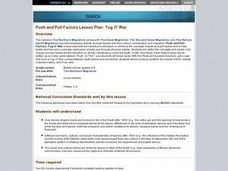
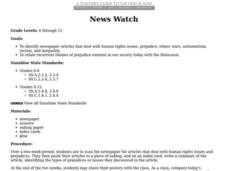




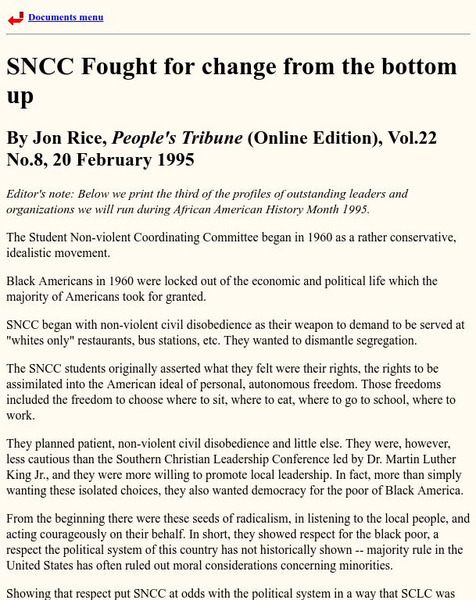



![Digital History: Chapter 7: Affirmative Action and the Case of Alan Bakke [Pdf] Lesson Plan Digital History: Chapter 7: Affirmative Action and the Case of Alan Bakke [Pdf] Lesson Plan](https://d15y2dacu3jp90.cloudfront.net/images/attachment_defaults/resource/large/FPO-knovation.png)





